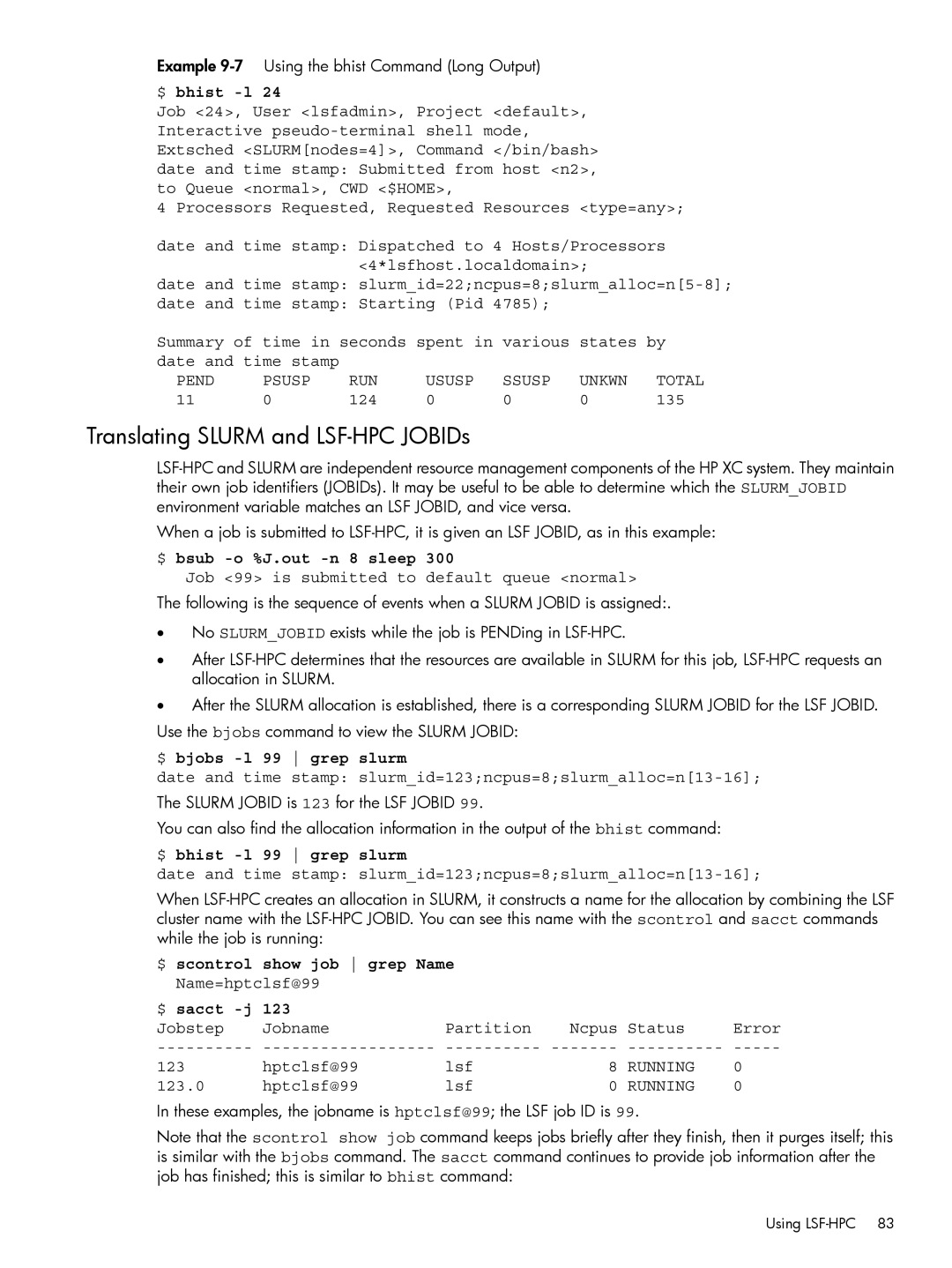Example
$ bhist -l 24
Job <24>, User <lsfadmin>, Project <default>, Interactive
4 Processors Requested, Requested Resources <type=any>;
date and time stamp: Dispatched to 4 Hosts/Processors <4*lsfhost.localdomain>;
date and time stamp:
date and time stamp: Starting (Pid 4785);
Summary of time in seconds spent in various | states by | |||||
date and time stamp |
|
|
|
|
| |
PEND | PSUSP | RUN | USUSP | SSUSP | UNKWN | TOTAL |
11 | 0 | 124 | 0 | 0 | 0 | 135 |
Translating SLURM and LSF-HPC JOBIDs
When a job is submitted to
$ bsub -o %J.out -n 8 sleep 300
Job <99> is submitted to default queue <normal>
The following is the sequence of events when a SLURM JOBID is assigned:.
•No SLURM_JOBID exists while the job is PENDing in
•After
•After the SLURM allocation is established, there is a corresponding SLURM JOBID for the LSF JOBID. Use the bjobs command to view the SLURM JOBID:
$ bjobs -l 99 grep slurm
date and time stamp: slurm_id=123;ncpus=8;slurm_alloc=n[13-16];
The SLURM JOBID is 123 for the LSF JOBID 99.
You can also find the allocation information in the output of the bhist command:
$ bhist -l 99 grep slurm
date and time stamp:
When
$ scontrol show job grep Name
Name=hptclsf@99
$ sacct |
|
|
|
| |
Jobstep | Jobname | Partition | Ncpus | Status | Error |
123 | hptclsf@99 | lsf | 8 | RUNNING | 0 |
123.0 | hptclsf@99 | lsf | 0 | RUNNING | 0 |
In these examples, the jobname is hptclsf@99; the LSF job ID is 99.
Note that the scontrol show job command keeps jobs briefly after they finish, then it purges itself; this is similar with the bjobs command. The sacct command continues to provide job information after the job has finished; this is similar to bhist command:
Using
